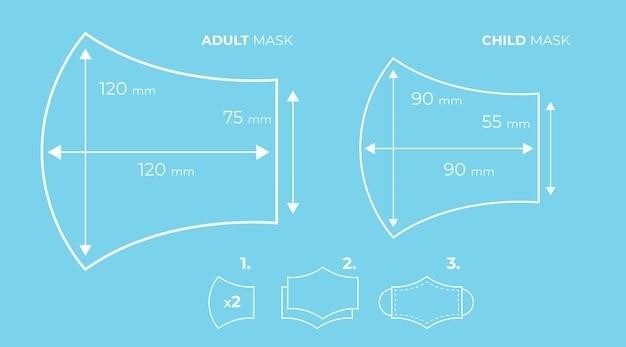Hip Replacement Exercises After 6 Weeks⁚ A Guide to Recovery
This guide provides a comprehensive overview of exercises you can start at 6 weeks post-hip replacement surgery‚ helping you regain strength‚ mobility‚ and a better quality of life. It covers essential exercises‚ recommended frequency‚ and progression over time‚ alongside additional tips for successful recovery.
Introduction
After undergoing a total hip replacement (THR)‚ embarking on a well-structured exercise program is paramount to your recovery. This guide focuses specifically on exercises you can begin at 6 weeks post-surgery‚ a pivotal stage in your rehabilitation journey. While the first few weeks after surgery concentrate on healing and pain management‚ the 6-week mark marks a transition towards regaining strength‚ flexibility‚ and functional movement. This period is crucial for building a solid foundation for a full recovery‚ allowing you to resume daily activities and enjoy a more active lifestyle.

This guide provides a comprehensive outline of exercises tailored for this phase‚ incorporating essential elements like hip flexion‚ extension‚ abduction‚ and standing rocks. We delve into recommended exercise frequency and duration‚ progression strategies over time‚ and valuable tips to optimize your recovery. By adhering to these guidelines and consulting your healthcare professionals‚ you can confidently navigate this stage of rehabilitation and achieve your desired outcomes.
Importance of Exercise After Hip Replacement
Regular exercise plays a vital role in your recovery after a total hip replacement. It not only helps restore strength and mobility in your hip joint but also contributes to a faster return to your daily activities. Exercise strengthens the muscles surrounding your hip‚ enhancing stability and reducing the risk of dislocation. It also improves flexibility‚ allowing for a greater range of motion‚ and increases cardiovascular fitness‚ promoting overall well-being.
Moreover‚ exercise aids in pain management. As you strengthen the muscles around your hip‚ you reduce stress on the joint‚ leading to reduced pain and discomfort. Exercise also helps improve blood circulation‚ promoting healing and reducing swelling. By engaging in a structured exercise program‚ you actively participate in your recovery‚ empowering you to regain independence and enjoy a higher quality of life after surgery.
Exercise Precautions for the First 6 Weeks
The first 6 weeks after hip replacement surgery are crucial for healing and preventing complications. During this period‚ it is vital to follow your surgeon’s and physical therapist’s instructions carefully. Avoid bending your operated hip past 90 degrees (a right angle) to minimize the risk of dislocation. This means avoiding activities like low chairs‚ bending over to pick up objects‚ and crossing your legs.
Additionally‚ be mindful of the weight you put on your operated leg. Your surgeon will advise you on the appropriate weight-bearing status‚ which may vary depending on your individual recovery. Remember‚ listen to your body and stop any exercise if you experience sharp pain. It is essential to be patient and consistent with your exercises. As you progress‚ your physical therapist will guide you through the appropriate progression of exercises‚ ensuring your safety and optimal recovery.
Exercises to Start at 6 Weeks Post-Surgery
By six weeks post-surgery‚ you can start incorporating a range of exercises to strengthen your hip muscles and improve mobility. These exercises should be performed within your pain tolerance‚ and you should always consult your physical therapist for guidance and modifications based on your individual needs. Here are some common exercises to begin at this stage⁚
Hip Flexion⁚ Lie on your back with your legs straight. Slowly bend your operated leg at the knee‚ bringing your heel towards your buttocks. Hold for a few seconds and then slowly extend your leg back to the starting position. Repeat 10 times. Hip Extension⁚ Stand with your feet shoulder-width apart. Keep your operated leg straight and slowly swing it backward as far as comfortable. Hold for a few seconds and then slowly return to the starting position. Repeat 10 times.
Hip Abduction⁚ Lie on your side with your operated leg on top. Keeping your leg straight‚ slowly lift your leg up toward the ceiling. Hold for a few seconds and then slowly lower your leg back to the starting position. Repeat 10 times.
Hip Flexion
Hip flexion exercises target the muscles at the front of your hip‚ which are essential for activities like walking and climbing stairs. After a hip replacement‚ it’s crucial to strengthen these muscles gradually to restore your range of motion and prevent strain. Here’s how to perform a hip flexion exercise⁚
Starting Position⁚ Lie on your back with your legs straight and your operated leg extended.
Movement⁚ Slowly bend your operated leg at the knee‚ bringing your heel towards your buttocks. Keep your leg straight as you do this.
Hold⁚ Hold this position for a few seconds‚ feeling a gentle stretch in the front of your hip.
Return⁚ Slowly extend your leg back to the starting position.
Repetitions⁚ Aim for 10 repetitions of this exercise‚ 2-3 times a day.
Remember to listen to your body and stop if you feel any sharp pain.
Hip Extension
Hip extension exercises strengthen the muscles at the back of your hip‚ which are crucial for stability and balance. After a hip replacement‚ these muscles need to be re-engaged to regain full functionality. Here’s how to perform a hip extension exercise⁚
Starting Position⁚ Stand with your feet shoulder-width apart‚ holding onto a stable surface for support. Keep your operated leg straight.
Movement⁚ Slowly swing your operated leg backwards‚ keeping it straight. You should feel a stretch in the back of your hip.
Hold⁚ Hold this position for a few seconds‚ feeling the stretch in the back of your hip.
Return⁚ Slowly bring your leg back to the starting position.
Repetitions⁚ Aim for 10 repetitions of this exercise‚ 2-3 times a day.
Remember to maintain good posture and avoid bending forward at the waist. Stop if you feel any sharp pain.
Hip Abduction
Hip abduction exercises target the muscles on the outside of your hip‚ which are responsible for moving your leg away from your body. Strengthening these muscles helps improve stability and balance‚ especially important after hip replacement surgery. Here’s how to perform a hip abduction exercise⁚
Starting Position⁚ Lie on your back with your legs straight and your arms by your sides.
Movement⁚ Slowly lift your operated leg out to the side‚ keeping it straight.
Hold⁚ Hold this position for a few seconds‚ feeling the stretch on the outside of your hip.
Return⁚ Slowly lower your leg back to the starting position.
Repetitions⁚ Aim for 10 repetitions of this exercise‚ 2-3 times a day.
Be sure to keep your hip‚ knee‚ and foot pointing straight forward throughout the exercise. Avoid any sudden or jerky movements.
Standing Rocks
Standing rocks is a progressive exercise that helps improve balance and strength after hip replacement. It involves shifting your weight back and forth over your surgical leg‚ gradually increasing the challenge as you regain strength and confidence.
Starting Position⁚ Stand with your feet shoulder-width apart‚ holding onto a walker or stable surface for support. Place your surgical leg behind you.
Movement⁚ Slowly rock your weight back and forth over your surgical leg‚ keeping your knee straight.
Focus⁚ Focus on maintaining a straight line from your shoulder to your knee‚ avoiding any bending or buckling of the surgical leg.
Progression⁚ As you become stronger‚ you can gradually reduce the amount of support you use‚ eventually progressing to standing without any assistance.
Repetitions⁚ Begin with a few repetitions and gradually increase the number as you feel comfortable.
Always listen to your body and stop if you experience any pain. Consult with your physical therapist or doctor for guidance on proper form and progression.
Recommended Exercise Frequency and Duration
The frequency and duration of your exercises will depend on your individual recovery progress and your physical therapist’s recommendations. However‚ a general guideline for starting out is to aim for 2-3 days of exercise per week‚ gradually increasing to 4-5 days as you get stronger.
It’s crucial to listen to your body and avoid pushing yourself too hard‚ especially in the early stages of recovery. If you experience any sharp pain or discomfort‚ stop the exercise immediately and consult with your doctor or physical therapist.
Each exercise session should include a warm-up‚ the specific exercises prescribed by your physical therapist‚ and a cool-down. A warm-up might involve light stretching or walking‚ while a cool-down could include gentle stretches or light cardio.
The duration of each exercise session can vary depending on your fitness level and the intensity of the exercises. Start with shorter sessions‚ gradually increasing the duration as you build endurance.
Progression of Exercises Over Time
As you progress through your recovery journey‚ the exercises you perform will become more challenging and demanding. This gradual progression is crucial for ensuring that your hip joint and surrounding muscles are adequately strengthened and prepared for the demands of everyday activities.
Your physical therapist will guide you through this progression‚ adjusting the exercises and increasing the intensity based on your individual progress. This might involve increasing the number of repetitions‚ adding resistance bands or weights‚ or incorporating more advanced exercises.
It is important to be patient and persistent with your exercise routine. Even small improvements in strength and flexibility can have a significant impact on your overall recovery.
Remember to listen to your body and avoid pushing yourself beyond your limits. If you experience any pain or discomfort‚ stop the exercise immediately and consult with your physical therapist.
Additional Tips for Successful Recovery
Beyond the exercises themselves‚ there are several additional tips that can enhance your recovery after hip replacement surgery. These include⁚
- Maintain a Healthy Weight⁚ Excess weight puts additional stress on your hip joint. Maintaining a healthy weight can reduce this stress and promote faster healing.
- Proper Nutrition⁚ Consume a balanced diet rich in fruits‚ vegetables‚ and lean protein. This provides your body with the nutrients it needs to heal and rebuild muscle tissue.
- Adequate Rest⁚ Rest is essential for healing. Ensure you get enough sleep and avoid overexertion.
- Pain Management⁚ Follow your doctor’s instructions for pain management. Over-the-counter pain relievers or prescription medications can help alleviate discomfort and allow you to participate in your rehabilitation program.
- Avoid Smoking⁚ Smoking hinders the healing process and can increase the risk of complications. If you smoke‚ quitting is highly recommended.
- Stay Hydrated⁚ Drink plenty of fluids throughout the day to help flush out toxins and support healing.
Remember‚ recovery is a journey‚ and it may take time to regain full functionality. Stay positive‚ follow your healthcare team’s advice‚ and celebrate your progress along the way.
Six weeks after hip replacement surgery is a significant milestone in your recovery journey. By this point‚ you’ve likely made substantial progress‚ and the exercises outlined in this guide can further strengthen your hip and surrounding muscles‚ accelerating your return to a more active lifestyle. Remember‚ consistency is key. Make these exercises a regular part of your routine‚ and gradually increase the intensity and duration as you feel stronger.
While this guide provides valuable information‚ it’s essential to consult with your doctor or physical therapist before starting any new exercise program. They can tailor a personalized plan based on your individual needs and progress. With dedication‚ patience‚ and the right guidance‚ you can achieve a full and fulfilling recovery after your hip replacement surgery.


















